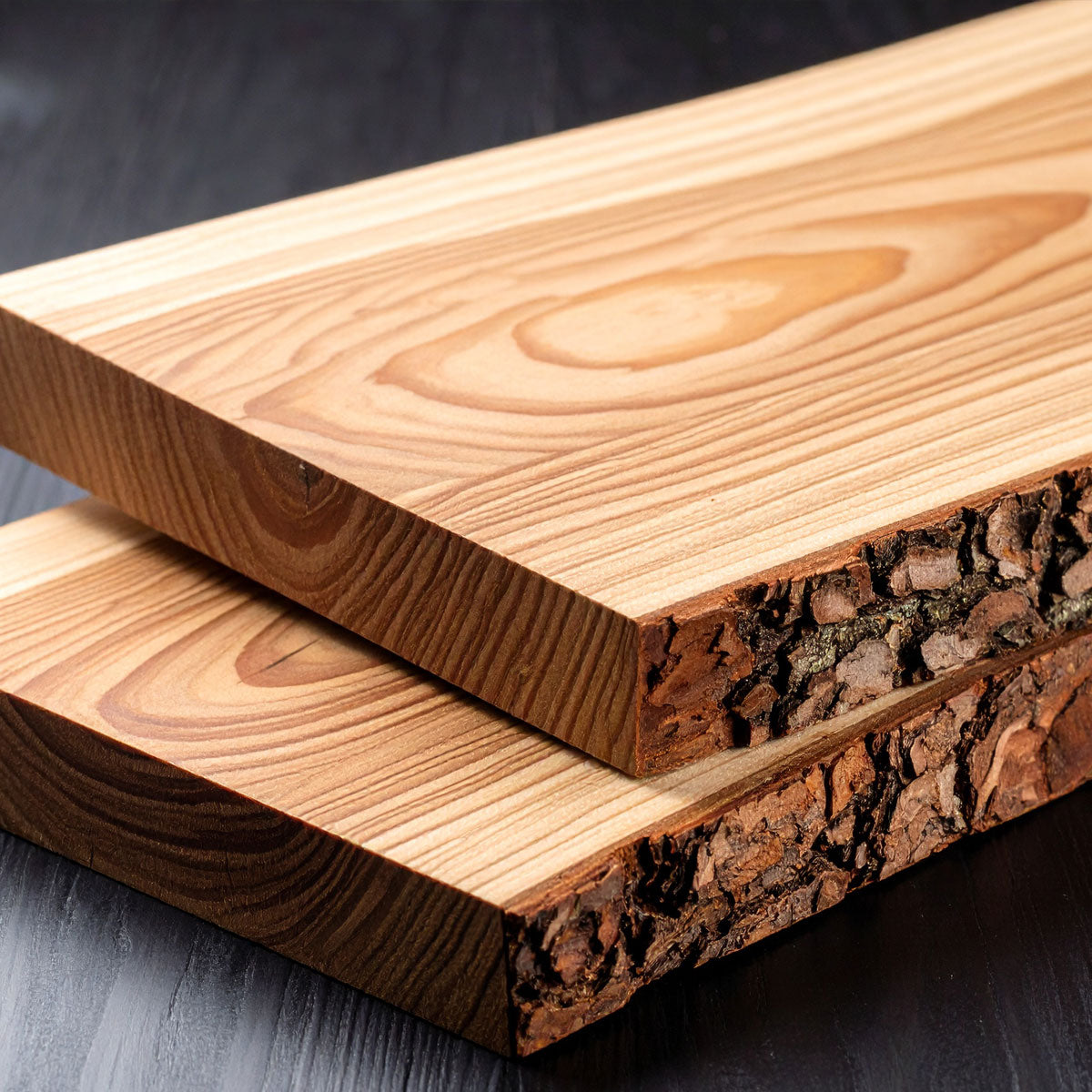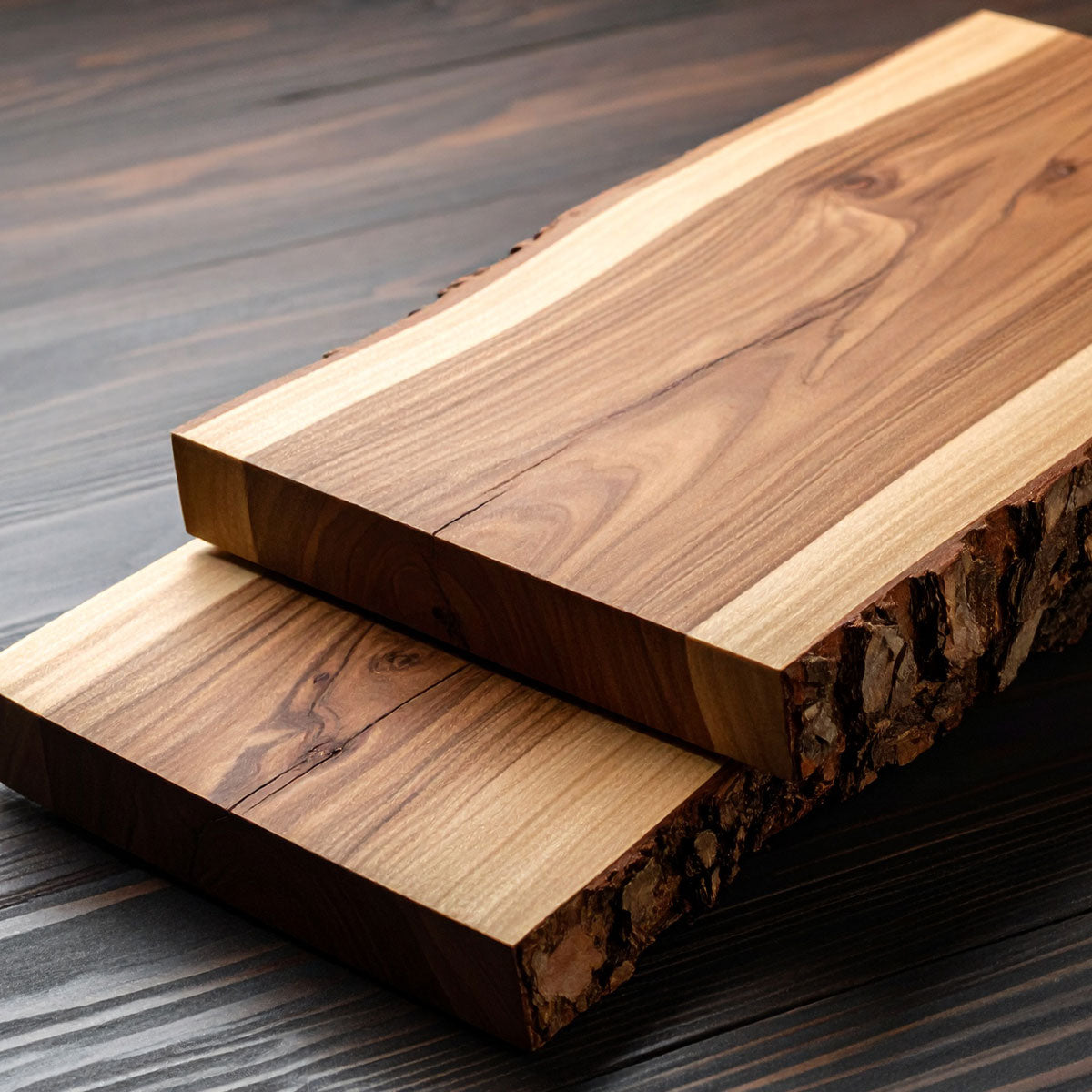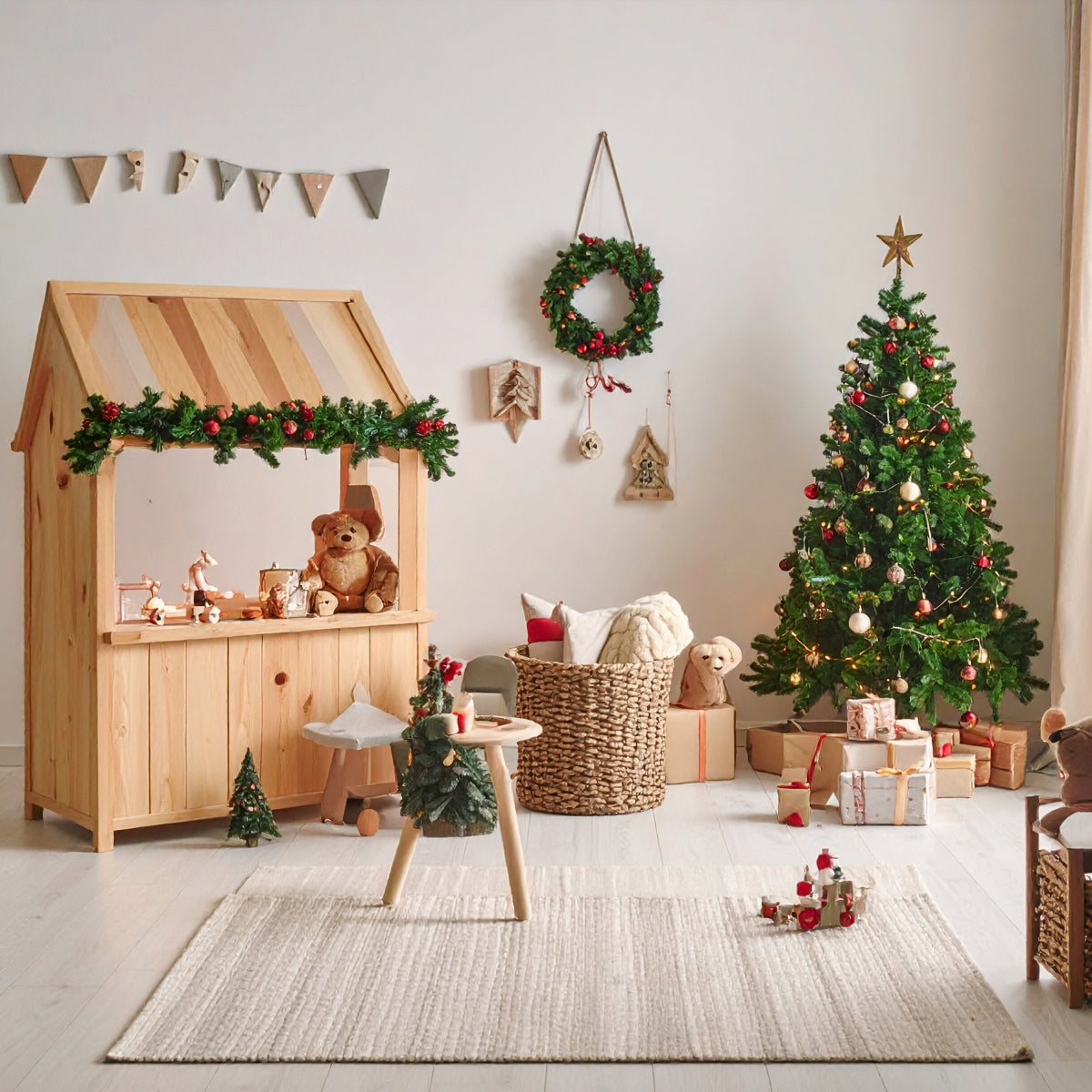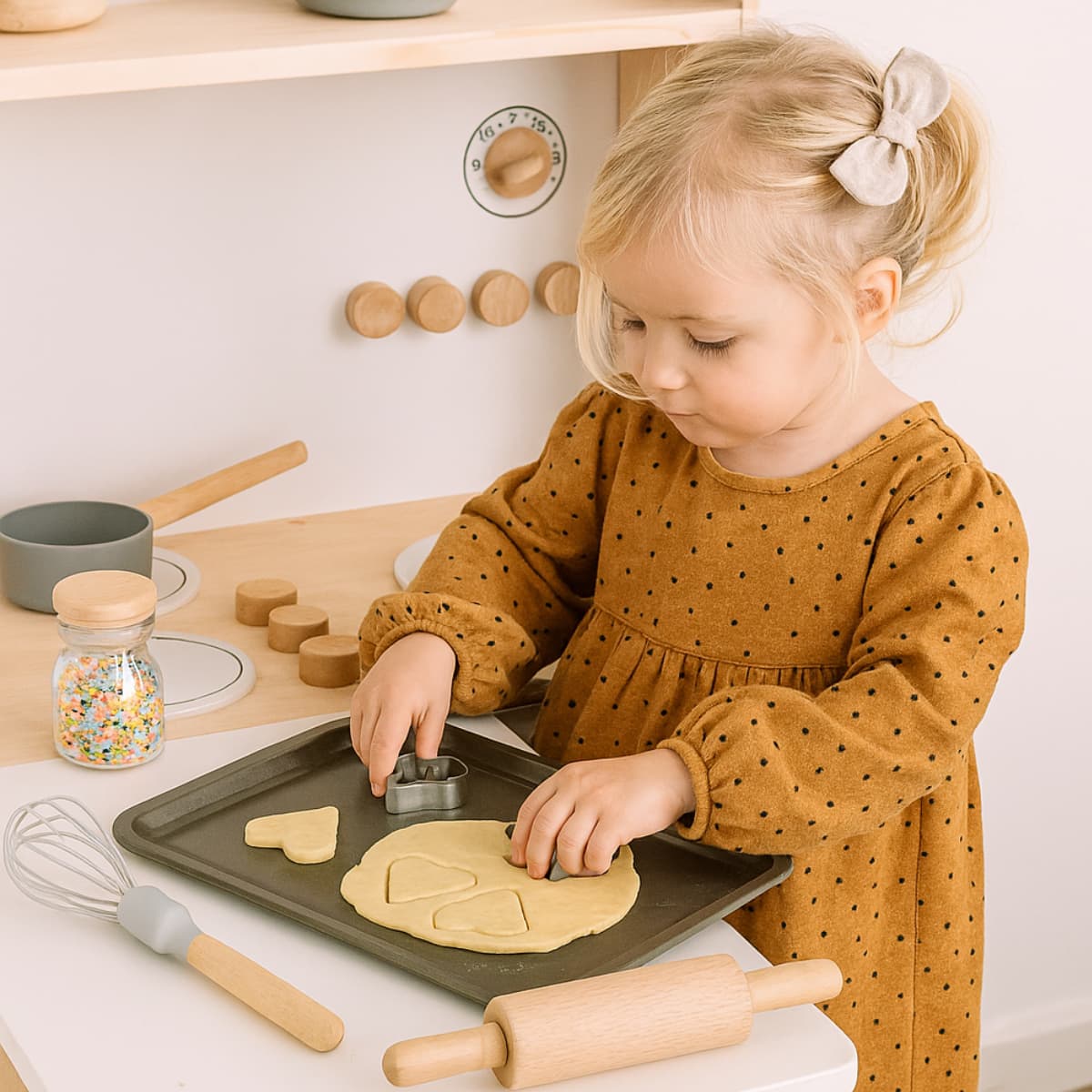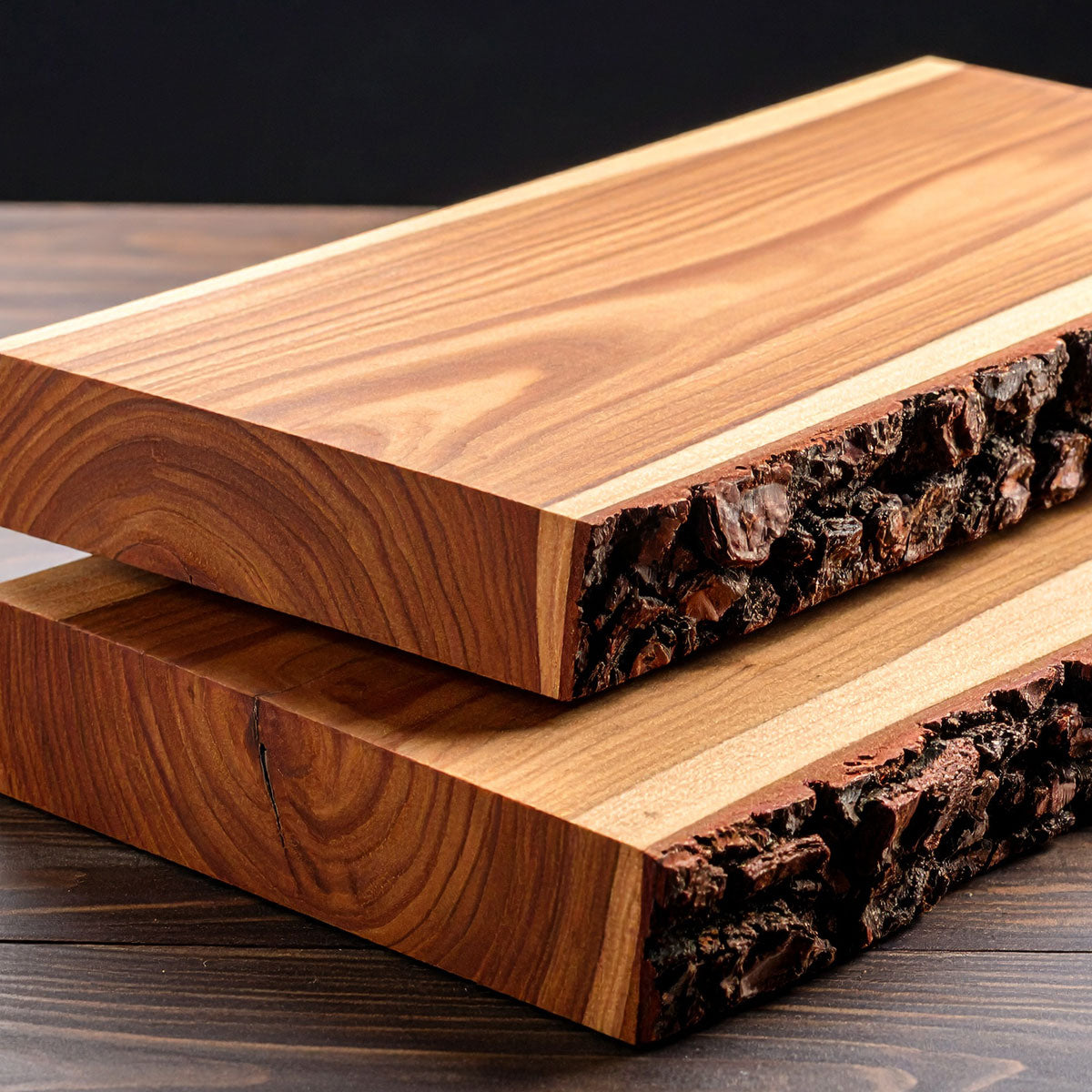
Chestnut
Chestnut Wood – Properties, Uses & Special Features
Chestnut wood mainly comes from the sweet chestnut (Castanea sativa) and is considered one of Europe’s robust and decorative hardwoods. It is valued for its natural durability, warm coloration, and versatile applications – both indoors and outdoors.
Origin & Species
-
Genus: Castanea
-
Main species: Sweet chestnut (Castanea sativa)
-
Distribution: Western and Southern Europe, also cultivated in Central Europe
-
Note: Horse chestnut (Aesculus hippocastanum) is botanically unrelated and unsuitable for wood use
Appearance & Structure
-
Color: Sapwood whitish-yellow, heartwood light to dark brown
-
Grain: Ring-porous, distinctive, with clearly visible growth rings
-
Surface: Smooth, decorative, with flame and stripe patterns
-
Special feature: Darkens over time to warm brown tones
Technical Properties
| Feature | Description |
|---|---|
| Hardness | Medium (Brinell hardness approx. 15–23 N/mm²) |
| Density | Approx. 600–700 kg/m³ – medium weight |
| Workability | Good for sawing, planing, sanding, and carving |
| Elasticity | High – well bendable, low warping tendency |
| Durability | Class 2 – highly resistant to fungi & insects |
| Drying | Slow and careful – prone to cracking if dried too quickly |
Applications
-
Furniture: Tables, cabinets, shelves, veneered elements
-
Toys: Outdoor play equipment, tone bars, sturdy components
-
Interior design: Wall cladding, stairs, parquet flooring
-
Outdoor use: Fences, garden furniture, playground structures
-
Musical instruments: Drums, xylophones
-
Crafts: Carvings, decorative items
-
Firewood: High calorific value, pleasant scent
Advantages
-
High weather resistance – even without chemical treatment
-
Natural resistance to fungi and insects
-
Decorative, warm appearance
-
Easy to work and finish
-
Sustainable and regionally available
Disadvantages
-
Demanding drying process
-
Prone to discoloration when in contact with iron
-
Gluing can be difficult due to acidic wood properties
-
Higher price than basic softwoods
Conclusion
Chestnut wood is a durable, versatile material with natural resilience and decorative appeal. It offers ideal properties for toys, furniture, and outdoor constructions – ecologically sound, aesthetically pleasing, and educationally valuable.

